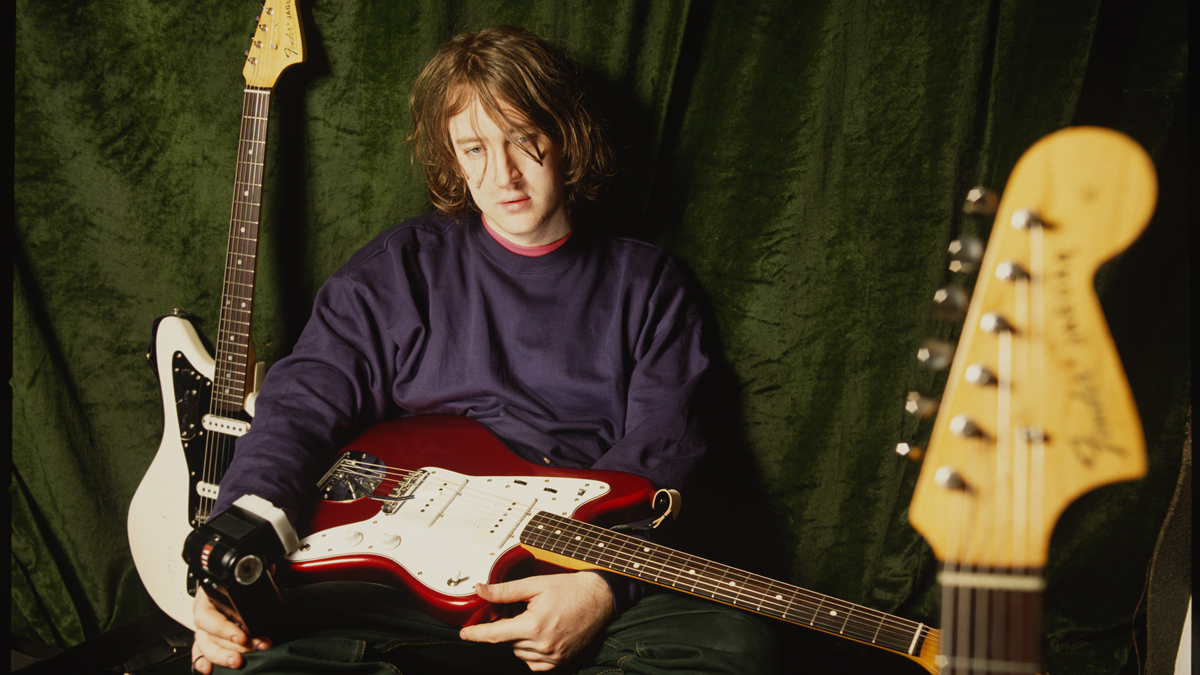5 ways My Bloody Valentine changed the sound of guitar playing forever
A deep dive into the forces behind MBV's formidable shoegaze approach, and how their pioneering take on the electric guitar changed the future of the instrument

My Bloody Valentine are the ultimate '90s cult guitar band. They helped define a genre – shoegaze – before transcending it, then disappearing for 20 years. Though their influence remained, their records were so out-of-fashion that they were impossible to find until eBay came along.
By the time of their seminal album Loveless, their approach to the guitar was completely iconoclastic. Led by the mercurial Kevin Shields, alongside co-guitarist Bilinda Butcher, they developed a way of playing the guitar that had a lot more to do with atmosphere and sound design than just simple riffs or chord progressions.
Saying that, however, they had some great hooks – the monolithic power chords of Only Shallow, legato whammy lines of I Only Said, or reverb-drenched main riff of Come In Alone, for starters.
The group went the long way around to find their signature sound, however. After a number of early EPs, the band caught the attention of Creation Records, who put them in the studio to record an EP – You Made Me Realise. During the sessions for this EP, Kevin Shields was lent a Fender Jazzmaster, and started experimenting with the tremolo arm.
This, combined with a new habit of smoking cannabis, led to him discovering a new way of combining de-tuned bends with reverse reverb. The track Thorn was the first to be recorded this way, but it's Slow that has the best example of what would become his signature "glide" guitar tone.
Between 1988's Isn't Anything and 1991's seminal Loveless, their sound took a quantum leap. Interest in the band was greater, the budget was bigger, and the drugs they were taking had changed.
Like others in the contemporary scene, they had discovered ecstasy, and this would have as much of an impact on the sound of the record as the Whammy pedal or Jazzmaster, driving the sound design to new, euphoric heights.
Get The Pick Newsletter
All the latest guitar news, interviews, lessons, reviews, deals and more, direct to your inbox!
Anyway, enough history. To celebrate the band finally releasing their entire catalog on streaming services, here are just a few of the band's coolest contributions to the sound of guitar playing, according to us…
1. Using the Jazzmaster tremolo arm to "glide"
Equipment used: Red Fender 1964 Jazzmaster
MBV's signature guitar sound relies on bending played notes down while strumming, and allowing reverb to turn this into a gauzy, deep vibrato. The more subtle de-tuning action of the Fender Jazzmaster allows for this effect to happen, where other tremolo systems result in a much more dramatic de-tuning.
Shields has described this as being like an "infinite horizon", and something that the band were using to try and induce a trance state, but it's completely absent from their earliest material.
The reason? Simple, really – he didn't have access to a Jazzmaster until 1988, when Bill Carey lent him one during the sessions for You Made Me Realise. The Jazzmaster ended up assuming a starring role on the cover of Loveless – and the rest is history.
2. Transforming guitar sounds with reverse reverb
Equipment used: Alesis Midiverb II, Yamaha SPX-90
Shields' signature "glide guitar" technique wouldn't work without a reverse reverb, which transformed regular guitar playing into something altogether more hypnotic, and even transcendent.
MBV's weapons of choice were rack-based, and there was a time when you could pick up a Midiverb in decent condition for the equivalent of about $50, but prices have gradually climbed in the last couple of years. Whether that's because of increasing interest in the sounds of MBV, or because supply has decreased as old units have broken down, we don't know.
In any case, the reverse reverb of this otherwise quite limited rack reverb became a part of MBV's signature sound. For a slightly different rack unit, the Alesis Quadraverb+ was a staple of Verve guitarist Nick McCabe's rack, and crops up on a lot of other shoegaze and dream pop records, while prices of the Yamaha SPX90 haven't shot up as much.
Of course, many of today's modern reverb pedals offer a reverse setting, while Keeley Electronics even dedicated an entire pedal, the Loomer, to Shields' signature sound.
3. Taking the Whammy in new directions

Equipment used: DigiTech Whammy
Whether it's the screaming oscillation from the main riff of Only Shallow, or the lead guitars from I Only Said, many signature guitar parts and textures from Loveless leaned heavily on this then-new pitch-shifting pedal.
The Whammy as a textural device was a very different way of using the pedal from other early innovators like Rage Against the Machine's Tom Morello. Other noise guitarists, like Ichiro Agata of Melt Banana, have taken the pedal in similar sonic directions, but Loveless remains the pinnacle of this shoegazing approach.
The intro of Only Shallow was reportedly recorded with a mic placed between two amps. This suggests that Shields was using the Whammy in combination with the Boss PN-2 Tremolo/Pan to generate the stuttering, screaming lead part.
4. Overdubbing to extreme
Equipment used: Jazzmaster, DigiTech Whammy, acoustic guitars, various distortions and fuzzes
Kevin has said in interviews that he tends to leave a Jazzmaster in every alternate tuning that's used for an MBV track, and many of their songs are in exotic tunings.
By altering voices and layering guitars, you get many of the mind-altering textures found on Loveless. Another key is the register and timbre of each sound. Some are layered with different distortions and the Whammy to heighten the gauzy, woozy thickness of the mix.
On other tracks, like Sometimes, there's an acoustic guitar layered into the mix to add transients and attack – a percussive, hypnotic effect that is accentuated by the lack of drums.
It's worth also saying that this penchant for overdubs – and in some cases, as much the exaggerated version peddled by the music press as the reality – influenced other bands and producers to try more dense mixes.
Perhaps the most famous records to take this mentality to its logical conclusion were the Smashing Pumpkins' commercial smashes Siamese Dream and Mellon Collie and The Infinite Sadness.
5. Building outrageously enormous pedalboards
Equipment used: Marshall Shredmaster, Tonebender, Devi Ever Godzilla, many, many others
The "shoegaze" moniker came about because the early bands in the scene were supposedly more interested in looking at their pedals than at the audience, so it's no surprise that MBV were pedal-obsessed.
In the BBC documentary The Joy of The Guitar Riff, Shields remarks offhand that he must have "a good few hundred" pedals, with most being "various types of distortion". In pictures of Kevin's post-reunion rigs, on some it looks like there could well be a hundred distortions.
What's interesting, however, is that, based on eyewitness accounts of the band's early live shows, his original rig was often a lot smaller, with some staples like a Marshall Shredmaster, dual Boss PN-2 Tremolo/Pan pedals and, of course, the DigiTech Whammy.
Alex Lynham is a gear obsessive who's been collecting and building modern and vintage equipment since he got his first Saturday job. Besides reviewing countless pedals for Total Guitar, he's written guides on how to build your first pedal, how to build a tube amp from a kit, and briefly went viral when he released a glitch delay pedal, the Atom Smasher.
“The main acoustic is a $100 Fender – the strings were super-old and dusty. We hate new strings!” Meet Great Grandpa, the unpredictable indie rockers making epic anthems with cheap acoustics – and recording guitars like a Queens of the Stone Age drummer
“You can almost hear the music in your head when looking at these photos”: How legendary photographer Jim Marshall captured the essence of the Grateful Dead and documented the rise of the ultimate jam band










